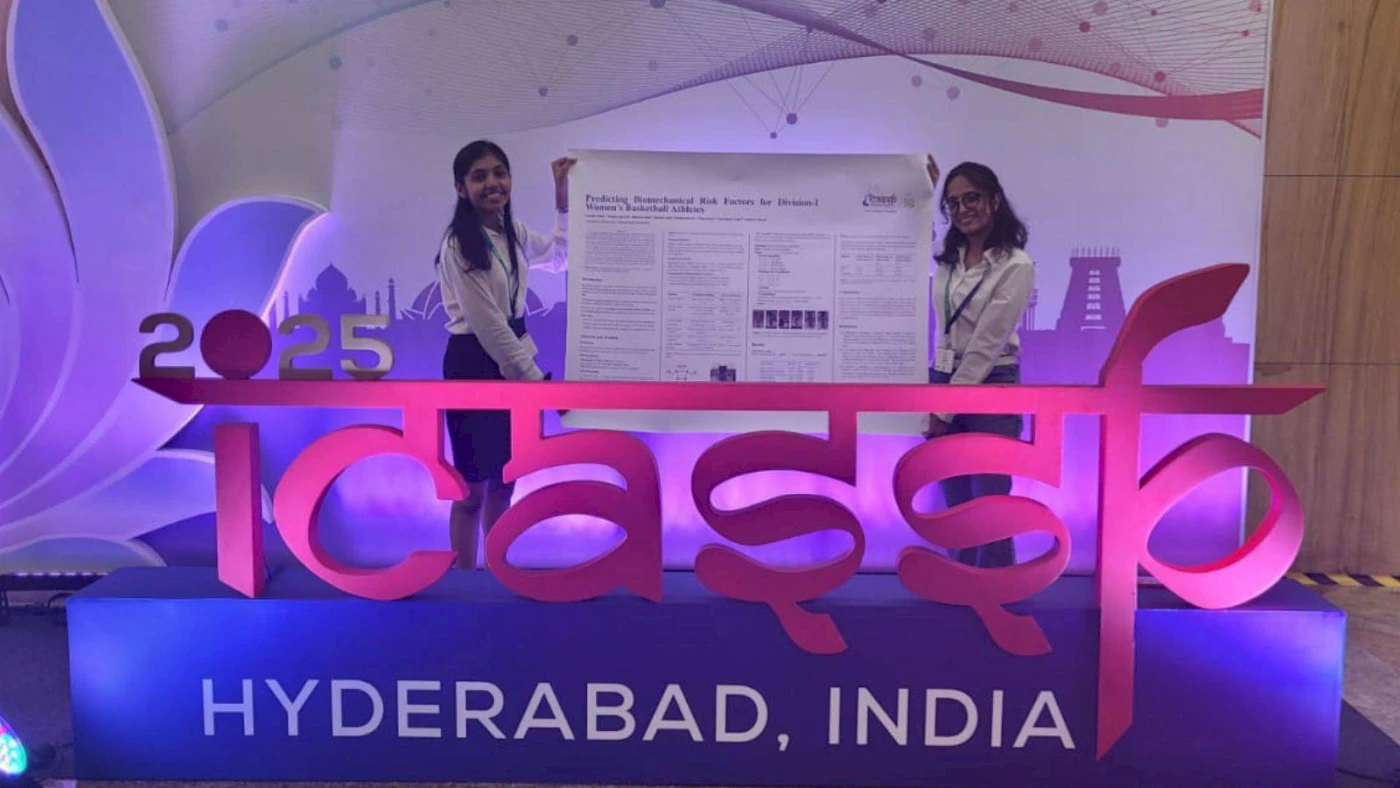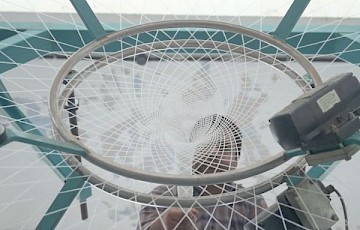14 April 2025
AI Engineered Solution to Boost Basket Scorer’s Performance

Basketball, a physically intense sport with high chances of injuries, makes biomechanical assessments critical to pinpoint incorrect body positions and movements that increase the likelihood of injury. This information allows coaches and trainers to develop specific programmes aimed at correcting these issues and preventing injuries. However, traditional analysis methods such as optoelectronic systems and force platforms, are costly and need specialised training, calling for more accessible tools that utilise computer vision (CV) and machine learning (ML). These technologies offer cost-effective, real-time analysis of jump landings using video, enabling the identification of movement errors without the sole reliance on expert manual observation.
Building on this, a group of students at Ahmedabad University has engineered an innovative AI system which processes videos of college athletes performing jumps and automatically flags movements that have a high probability of leading to injuries, achieving a high level of accuracy. Their research focuses on understanding and predicting how collegiate basketball players move, particularly during jump landings – a movement frequently associated with injuries.
Specifically, the study examines three key biomechanical factors that elevate injury risk: the degree of knee flexion (how much the knee bends), lateral trunk flexion (sideways bending of the torso), and foot landing asymmetry (uneven distribution of weight upon landing).
To train and evaluate their AI model, the researchers compiled a significant dataset of 8600 video frames showing counter-movement jumps performed by 17 female NCAA Division I basketball players. These jumps were filmed from both the front and side, and a specialised algorithm was used to label instances of improper landing techniques. For predicting these risky movements, the study employed a sophisticated computer vision model known as YOLOv5nu, an advanced "You Only Look Once" algorithm designed for object detection. The AI model demonstrated strong capabilities in identifying risky movements, achieving high precision in identifying errors, recall (ability to detect all actual errors), and [email protected] (overall performance at a specific confidence threshold).
This study is the result of the work of BTech students from Ahmedabad University: Aayushi Shah, Vanaja Agarwal, Dhairya Shah, and Harman Jani, along with doctoral student Srishti Sharma, under the guidance of Professor Mehul Raval from the School of Engineering and Applied Science at Ahmedabad University. They also collaborated with experts Tolga Kaya and Christopher Taber from Sacred Heart University in the USA. They recently presented their study at the 2025 IEEE International Conference on Acoustics, Speech and Signal Processing (ICASSP).
Vanaja, one of the student researchers, reflected on their conference presentation: "Surrounded by individuals interested in each other's work, I experienced an unexpected sense of connection. In conversations that spilled beyond research topics - into motivations, challenges, and shared wonder - I realised that conferences aren’t just academic rituals. They are moments of convergence, where ideas meet people, and people meet purpose. Presenting our work was certainly a highlight, but the connections we made were truly impactful."
The researchers acknowledge that limitations such as imbalances in the data and instances where movements are obscured can affect the model's performance. To overcome these challenges and further improve the system, future research will focus on expanding the dataset and exploring the use of multiple camera angles. Additionally, the team plans to develop a mobile application for the model, making this valuable real-time analysis tool more accessible for athletic training and proactive injury prevention efforts.



